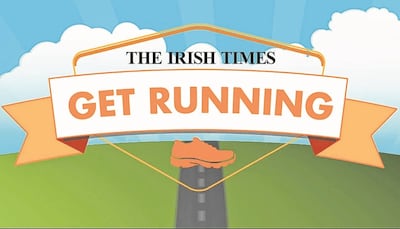For more than a decade I have spent my winter weekday evenings running along the brightly lit suburban paths of Dublin city with my running groups. These social running adventures filled with camaraderie, fresh air and fun are now unfortunately on hold due to Government restrictions. We are all staying local and running from home. So I find myself this evening heading out the door for my first solo run in the dark in many years. It feels very strange.
Lockdown part 2
When we started the first lockdown, running solo was a new experience that most runners embraced. We had daylight on our side and our off-road opportunities expanded as parks and beaches gave us more space and freedom to keep our distance and stay safe. But as we make our way through this second lockdown, the big difference from the last time around is the limited daylight and how that impacts our ability to roam safely and locally within our 5km radius.
Following the light
I have become a daytime runner since my work schedule has changed this year. Without a timetable of evening classes I can run early in the day and keep my evenings free for online coaching and writing. Motivation is easier in the morning, especially if you are used to running with others and now have to kick yourself out the door. In my last article in early November I discussed winter running, and encouraged anyone who has the flexibility to run in daylight to do so, but I am very aware that not everyone has this option.
Safety in numbers
This month thousands of runners who would normally meet their club or running buddies for those midweek energising runs are now having to find the motivation and confidence to run solo. Many also face the added challenge of finding a local route that is safe to travel in the dark on their own. I cannot say the dark was ever an issue for us running in groups before. I never really saw it as a barrier. But it is a completely different story when you leave home in the dark and only have your own motivation for company.
The darkness experiment
We all live in different areas of the country so it is hard to generalise about running in the dark. For me, my summer routes are now out of bounds in the evenings. The park is closed and the beach is too dark. It leaves me with the option of uneven footpaths or an exposed ring road as my only options. I’m lucky to have options. For many runners, running in the dark is simply too dangerous, too dark and unsafe where they live. Without street lights, footpaths or safe route, some runners have to find alternatives at this time of year.
Know your route
If you need to find an alternative running route this winter, start by taking an evening walk locally. Notice how busy the paths are, how well lit certain streets are and indeed how bumpy or uneven the footpaths are. Maybe it is safer to drive a mile from home to a better lit route and run from there? Regardless of where you live, running is more challenging in the dark. You do have to concentrate more on where your feet land. The glare from oncoming traffic can impact your visibility and there are naturally more hazards such as wet leaves and frosty paths at this time of year. Before you venture running, be comfortable with the terrain and the potential obstacles when walking.
Be adaptable
Depending on your route and how many people you are sharing the path with, you may have to change your running expectations. You may not have the freedom to run at the speed you might like at certain points of your run. There is no point trying to run your fastest 5km of the month where you have traffic light junctions, piles of wet leaves and a busy footpath to navigate. It might also be wise to leave the headphones at home too. With visibility limited, our hearing is more important than when you can see everything around you.
Look the part
There is no end to the variety of fancy lights, high-vis vest, headlight belts and flashing hats on the market to make you shine. But you can be the most visible runner in the world and still be a hazard to yourself and others. The most important thing to bring with you is a little cop-on. Experience your run from the perspective of others you meet. How do you act to oncoming traffic, to pedestrians, other runners and cyclists? We all need to get on together and make it easy for each other, rather than a competition for the available space.
Safety for all
Make the first move and step to the side rather than expect others to make space for you. This avoids second-guessing the next move of the person approaching and generally is less stressful for everyone than weaving through gaps. Avoid stepping down on to roads to avoid other pedestrians. Although roads may be quieter these days, any oncoming traffic and cyclists are not expecting you to step off the path. Be sensible – if a footpath is too busy to run safely, reconsider your route options.
What works for you
I certainly don’t wish to turn you off running in the dark. In fact, I know it can be so liberating to get out the door after work, break up the day and return home energised and looking forward to dinner. Just remember the extra factors to consider when running in the dark. Set yourself up for safe and comfortable run for yourself and those you meet. While other runners might be all smug about sunrise runs and golden leaves, you get to see the moon, the stars and those unexpected sights like city foxes, and those premature glistening Christmas trees that have started to appear already.
– Mary Jennings is founder and running coach with ForgetTheGym.ie. Mary's book Get Running published by Gill Books is out now.

Sign up for one of The Irish Times' Get Running programmes (it is free!).
First, pick the eight-week programme that suits you.
- Beginner Course: A course to take you from inactivity to running for 30 minutes.
- Stay On Track: For those who can squeeze in a run a few times a week.
- 10km Course: Designed for those who want to move up to the 10km mark.
Best of luck!














